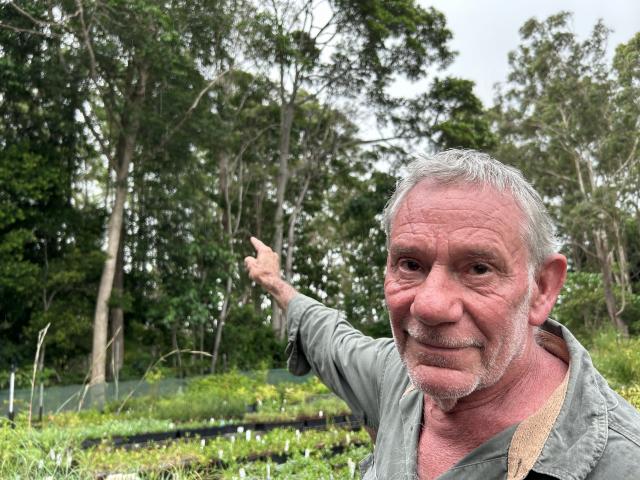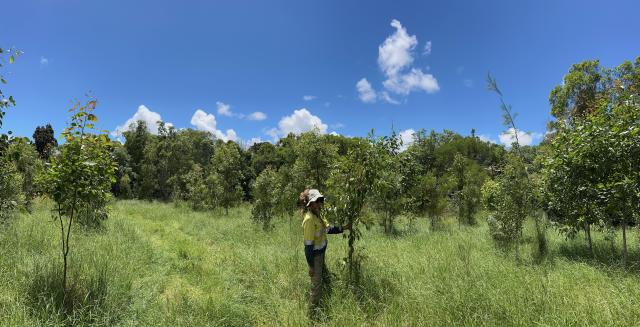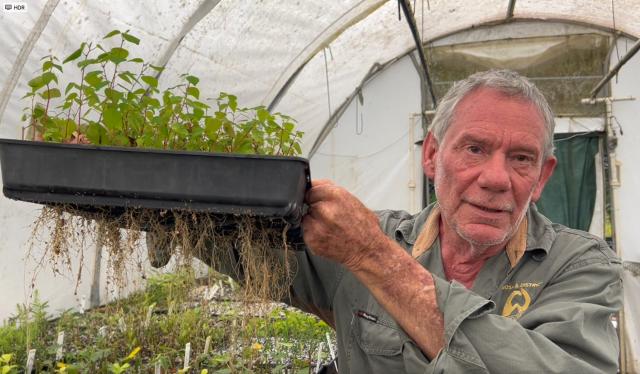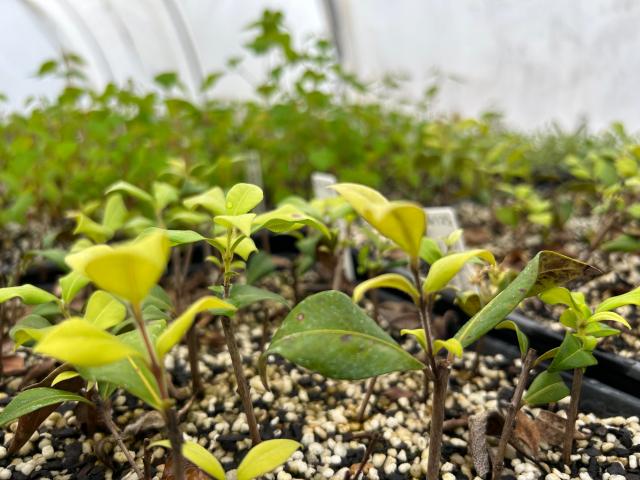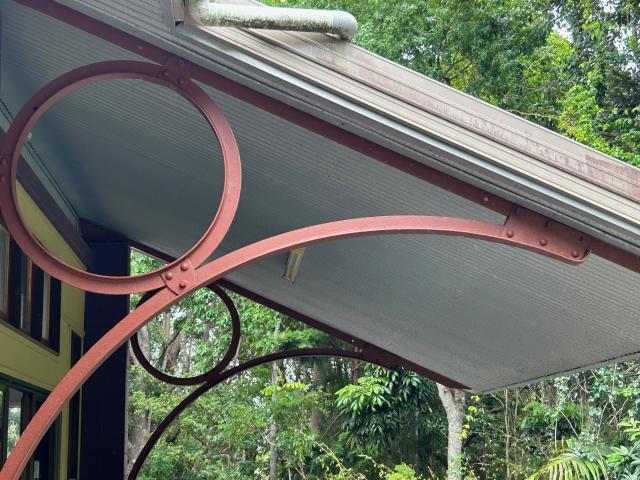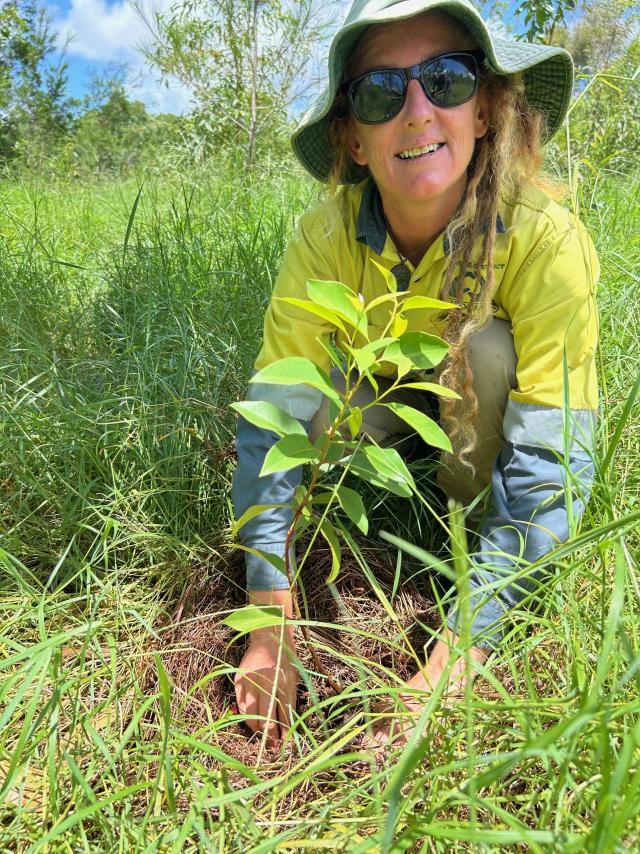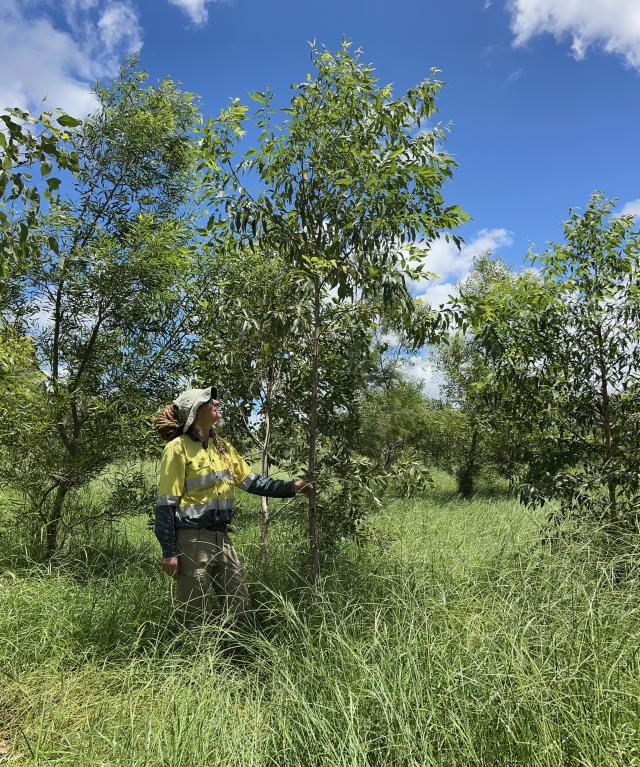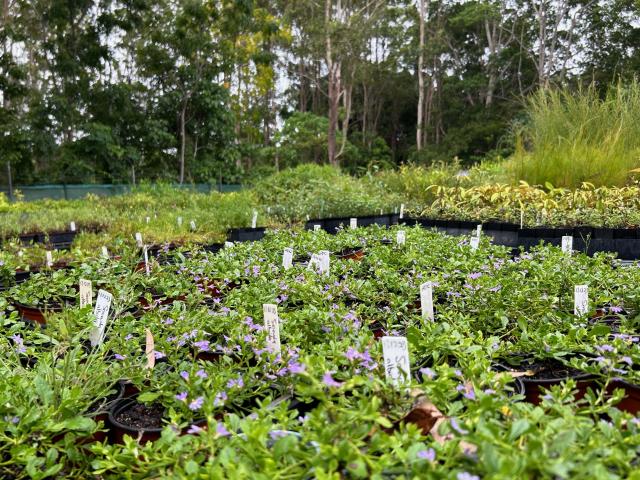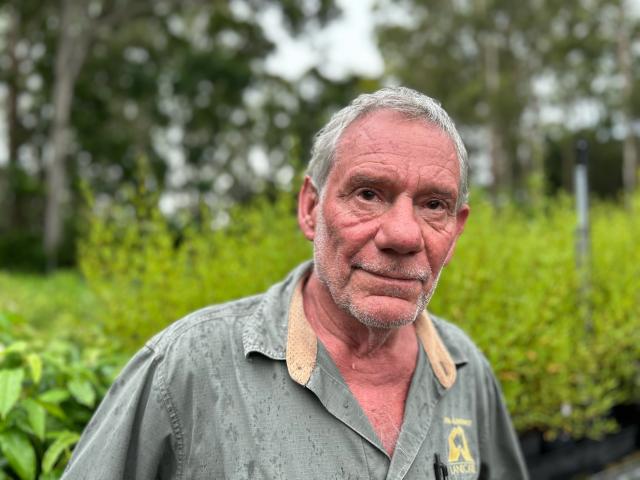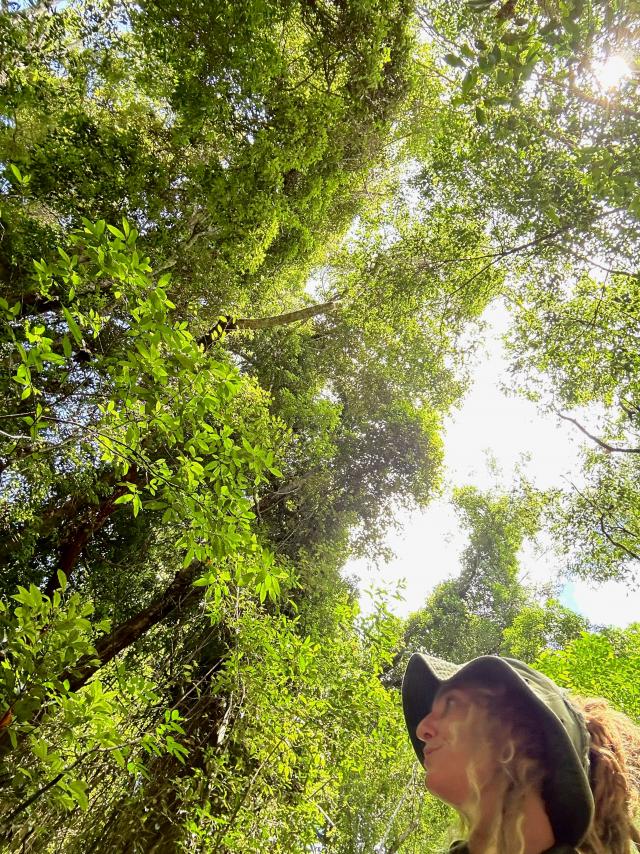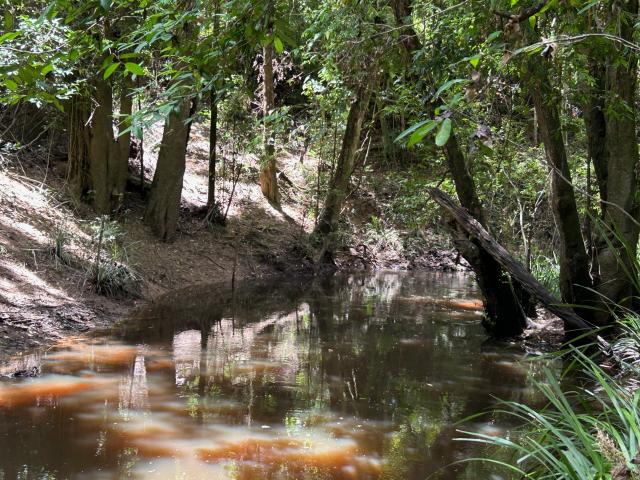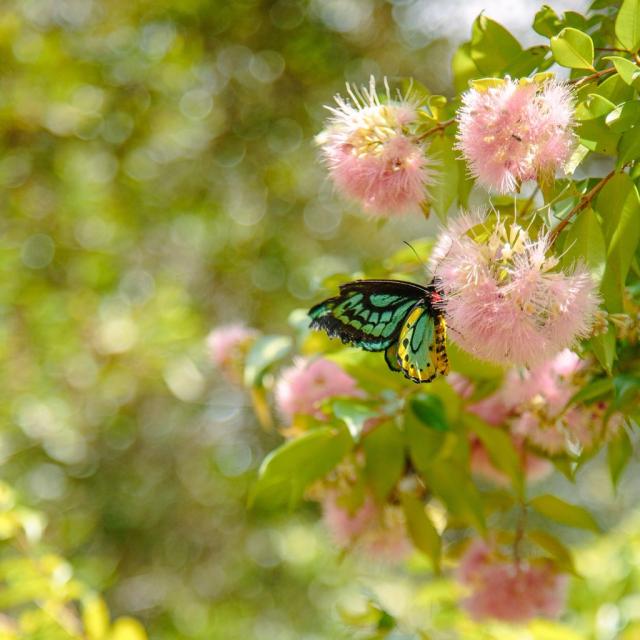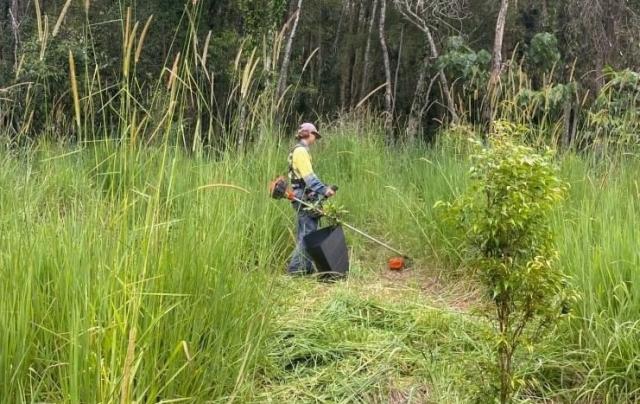For more than 30 years Noosa and District Landcare has been regreening the region and reestablishing native wildlife habitat. ERLE LEVEY sits down with the team that is helping keep Noosa natural.
“It’s about growing people, not just trees. That’s what I like to see.’’
“The degradation of our environment is not simply a local problem, nor a problem for one state or another, nor for the Commonwealth alone. Rather, the damage being done to our environment is a problem for us all – and not just government – but for of us individually and together.’’ – former Prime Minister Bob Hawke in his speech to launch Landcare.
From an initiative between the Victorian Government and the Victorian Farmers Federation in 1986, Landcare has grown to become a national body, as the need to protect the environment now ranks as arguably the world’s most pressing issue.
Many Australian communities had already begun practising Landcare decades earlier; with grass roots environmental issues being tackled as early as the 1950s.
In 1989, the national Landcare movement was officially recognised with Rick Farley of the National Farmers Federation (NFF), and Phillip Toyne of the Australian Conservation Foundation (ACF), successfully encouraging the Hawke Government to commit to supporting the emerging movement.
Today Landcare is vital part of the Gympie and Noosa regions – both having active movements after facing different environmental issues.
For Noosa it included the clear-felling of old-growth forests. For Gympie, the proposed Traveston Dam was part of it.
I’m sitting with Noosa and District Landcare general manager Phil Moran at the Rural Futures Centre in Pomona. It’s a multi-purpose building for a string of community organisations as well as the Landcare group that uses it as a base for contract work and training courses – such as Skilling Queenslanders for Work participants.
Yet it is also the site of the Landcare nursery for the hundreds of thousands of seedlings that are grown each year for rehabilitation projects.
Phil has been a member of Noosa Landcare since 1991. Originally from Brisbane, he loves the bush and lives on a 30-acre property at Cooran.
“I sold my catering business in Brisbane and moved up here. I didn’t have a job so I joined Noosa Landcare as a volunteer in 1991.
“Landcare had been going a little bit longer … since 1990. My membership number was 30, 31 or 32.
“In Brisbane, I did a traineeship apprenticeship in the Crest International Hotel in Brisbane on the corner of George Square, opposite City Hall. It was the biggest hotel in Brisbane at the time. The other big hotel was Lennons.
“Starting as a trainee manager, I ended up as catering manager when I was 23. It had seven bars in five restaurants, so that was a bit of an introduction to hospitality.’’
Phil saw the changes in Brisbane due to World Expo 88, and the way Queensland was thrust onto the international stage.
“It was fun in a lot of ways,’’ he said. “The city was quieter then, and it’s gone from a country town to being a proper city.
“I went to school just up the road. There were still cars in Queen Street.’’
Groups such as Landcare came about because of World Expo 88 and the changes in lifestyle.
The marriage between the Australian Conservation Society and National Farmers Federation saw groups starting up at a local level.
Noosa and District Landcare’s beginnings started with protests to save old-growth forests from clear-felling in the early 1980s.
Gympie and District Landcare had formed a few years earlier, after consultation with the Cattlemens Union of Australia – that later became the National Farmers Federation.
The work of these dedicated groups of volunteers, employees and trainees has become invaluable in the protection of the natural assets of the region.
A common bond between farmers and conservation groups was trees – invaluable in providing windbreaks, shade on watercourses and shade for stock.
“Stock do better when they have shade,’’ Phil said.
“Look at the weather today. The humidity is high but you go past any paddock and the cattle are in the shade.’’
Noosa Landcare is not just about ensuring healthy soil, clean waterways and natural bushland, it’s also about the development of the many individuals involved with the group.
“It’s about growing people, not just trees,’’ Phil said. “That’s what I like to see.’’
A lot of the participants in their Skilling Queenslanders for Work program come from the neighbouring Cooroora Secondary College at Pomona.
“You see them develop … we’ve got some great mentors here, such as Darrin Barden.
“To see these kids develop and get full-time jobs is so rewarding.’’
Speaking with Phil, you become aware that we either take for granted, or we don’t realise, the diversity there is in the Australian bush – the different species of trees, plants and wildlife.
With that, he points to a row of trees he planted 20 years ago that is fully established.
We talk about the benefit of trees forming a canopy over water courses, as a means of weed control rather than relying on concrete drains.
Sadly not enough is being done in this regard.
Growing up, Phil used to play in Kedron Brook, which is where Toombul Shopping Centre is being demolished because of flooding.
“I read the other day that was just a concrete drain.
“What you actually do then is speed up the volume of water so you have huge velocity.’’
Phil was chairman of Mary River Catchment Coordinating Committee for a while and again brought up the benefits of trees growing over the river.
“Things like the Mary River Cod … they need a differentiation of temperature to spawn, to trigger them. A lot of fish do that, which is why its good to have logs in the creek.
“There were those who used to pull the logs out. We used to have projects to put them back in.
“That slows the water down which means the predator sits this side and can wait for the little fish and attack them.
“The cod has got a home and the water aerates as it turns over the logs – they need that oxygen.
“Mary River Cod need a log 500mm in diameter to breed and lay their eggs.’’
Oceanographer, filmmaker and author Jacques-Yves Cousteau came up to the Murray River to save the lungfish – that would’ve been the ’80s.
“He saved the lungfish,’’ Phil said, “and the lung fish and its friends – the cod, the turtle, the mullet – saved us from the Traveston Dam.
“That was one of the major achievements of Peter Garrett while he was Minister for the Environment.’’
The main reason Noosa Landcare was established, Phil said, was the farmers and landowners being against weeds, with groundsel a particular problem at the time.
The second reason was the concern about the monocultures and expected loss of biodiversity in Yurol Forest – clear-felling of old-growth bushland to create softwood and hardwood plantations.
Some time ago there was an arrangement with the Department of Environment and Science, Noosa Council and Noosa Parks Association to buy the forestry leases.
They had a 99-year lease but the CEO of Noosa Shire Council at the time, Brett de Chastel, was really instrumental in negotiating with HQ Plantations to buy them at $3.60m.
Council provided $1.2 million, $1.2m came from Noosa Parks Association and $1.2 million from the Department of Environment and Science.
So the Yurol Ringtail Conservation Project is 2400ha and stretches right down to McKinnon Drive at Tewantin.
It effectively doubles the size of Noosa’s National Park estate, and protects wildlife corridors with major revegetation works to be carried out by the Kabi Kabi People Aboriginal Corporation, Greenfleet Australia and Noosa Landcare.
“That is this enormous connection from the coast to the hinterland,’’ Phil said. “It’s the biggest environmental move I will see in my lifetime – 2400ha of land coming across to national park over five years.
“When HQ Plantations are finished doing the harvesting, Noosa Landcare has a contract to revegetate 1000ha of land out there.
“We have this lovely symmetry that we started. This group originated by demonstrating against the plantations and now, 30 years later, we’ve got the job to revegetate them with native species.
“The whole idea is to make a koala corridor.’’
The Rural Futures Centre, where I’m talking with Phil, came about in 1997 as an education centre that would allow Noosa Landcare to expand its native plant propagation nursery, set up a farm forestry demonstration site, overcome its reliance on government funding, and generate enough income to give the organisation and staff some certainty of continuing operations.
The objectives were to link the education system with community organisations and the wider community – and to bring about environmental protection, restoration and ecologically sustainable development across the Sunshine Coast region.
The concept was supported by Peter Bradford, then principal of Cooroora Secondary College, who suggested that a 2ha area of school might be made available. The total project cost of about $600,000 saw Education Queensland secure a $300,000 grant to go towards building the new centre. This was supplemented by the skills program labour, hundreds of community volunteer hours, secondhand building material donations and a $40,000 private donation.
By 2000 the headquarters and nursery had become a reality., and it was envisaged that the centre would achieve full funding self-sufficiency within five years.
It became an incubator of many innovative eco-businesses and farming or gardening programs.
The venue became a living classroom used for playgroups, cooking classes, choir rehearsals and training courses.
The Skilling Queenslanders for Work program usually attracts younger people and they do 22 weeks in two parts.
“There’s a lot of misconceptions about Landcare,’’ Phil said. “Some people think we’re council and others think we are funded by the Federal Government.
“We don’t receive funding from anybody. We generate our own income.
“We turned over $4.1 million last year and there are 65 on staff. We are the biggest employer in Pomona.
“Much of our income is generated from a contracting crew in that 25 people or so that go out and do weed removal and tree-planting.
“We go for tenders with such entities as Burnett Mary Regional Group, Seqwater and Energex among others.
“It’s all competitive – we are not given anything.’’
The Skilling Queenslanders for Work program sees groups of 10 being trained in conservation land management, first aid and construction. They are in the nursery for 11 weeks and then in the field for another 11.
In that time they learn how to use brushcutters, mowers and the like.
“We’ve trained 400 people in the time I’ve been here,’’Phil said. “Many come through to work here, with Noosa Council, Sunshine Coast Council, Seqwater, BMRG or other contractors.
“As an employer you can be interviewing someone for a job for 15 minutes, but if I’ve had you here for 22 weeks I know what you’re like. Do you turn up on time? Do you show interest? Do you ask questions?
“Towards the end of their traineeship, we will put them out on a contract course for a couple of days. We’ve got a reputation of employing quite good people and Noosa Council often pick the best.
“When I started this, there was virtually no career in the environment. Now they’ve got a pathway.
“One staff member has been here for 17 years. We have five people due for long service leave.
“Having trainees leave after two months, that’s not a viable proposition.
“We can talk about environmental sustainability. What about economic sustainability?
“That’s why we moved across to a fee-for-service model.
“We charge clients to do work and as long as we do a good job, we will continue to get the work. You build a reputation, and so we don’t rely on a grant.’’
The Covid pandemic changed the demographic of the Noosa hinterland and Gympie region, with a groundswell of newcomers looking for a better lifestyle than the urban areas.
“There’s been a big of increase in values and many of people coming up here, don’t really want to clear lantana on a hot and humid day, so they get us to do the hard stuff.
“They are also interested in the type of plants and vegetation they have growing, so we can help identify that.’’
Another way in which Noosa Landcare generates revenue is by producing 250,000 trees a year – eucalyptus and rainforest trees that are endemic species to the area.
The Hinter Hub in the heart of Pomona is another arm of the business. It was the old QCWA Hall and a school before that.
It has been completely restored and refurbished to create a centre for local artisans as well as a plant nursery.
The question now is what role volunteers play in Landcare? How dependent upon them is the business, and how does the community respond?
“As we’re a not-for-profit community group we rely on volunteers. However, my job is to make us a not-for-loss community group.
“We do have volunteers – around about 40. One of them has been here for 23 years – so if the volunteers are coming back after that length of time, they must enjoy it.
“Volunteers primarily work in our three nurseries. One is called the Potters Club, and they just come out and do the potting and have a great little social event.
“Gardening is so therapeutic – people love to work with the soil to balance their life, and they know that they are contributing.’’
The big buzz Phil gets from trees is driving past places where he collected the seeds, planted the trees and now its bushland.
“The volunteers know what they are doing is contributing to a lot of revegetation. Last year we planted 63,000 trees on 63ha in three and a half months on one job.
“All the volunteers know that their trees went into that site and that’s wonderful satisfaction.
“One of the men is not a handyman but comes and helps make cages to stop the rats eating the seedlings in the nursery.’’
Those of us in everyday life can take simple steps to protect seedlings, protect creeks, create shade or an environment to encourage biodiversity for wildlife.
“You don’t have to have hundreds of acres to do it. Try to stick to endemic local species because a lot of the other varieties can become weak.
“And just on this, I believe that anything is better than bare soil. So are some of the so-called weeds.
“Some weeds are transitory plants that transform the ecosystem.
“Rats tail grasses are an issue because they are not palatable for stock.
“We have to treat the bad ones – cat’s claw creeper and Madeira vine. If you don’t have them on your property, you don’t want them.
“Singapore daisies were introduced in the ’70s to protect sand dunes.
“We also have aquatic weeds, such as salvinia which was introduced in 1950s as an ornamental.
“Cabomba is prolific in Lake Macdonald
“Groundsel is not the problem it used to be because the shire now issues notices to individual landholders to eradicate it.
“Most weeds like full sun, so a tree canopy is the best deterrent.’’
Noosa Landcare has a three-year program to control or slow down the impact of cat’s claw creeper and Madeira vine.
On the other hand, there is a conservation network to increase the population of Richmond birdwing butterflies. It is a vulnerable species and feeds on a particular vine.
“There’s an example of something that can be done in the garden,’’ Phil said. “Plant a couple of vines. Shade is what they love – there are a lot of things that we can do.’’
Fencing of creek banks gets the cows away from the water so they don’t contaminate it. By providing watering points in paddocks, the stock can be drawn away so their manure becomes fertiliser.
During my visit to Landcare I went on a field trip to see a tree-planting program at Cootharaba.
Field officer Tamara Kubica was in charge of a work team carrying out slashing and weed control at the Dangerbridge property, now a nature refuge like many others in the area.
The 270ha property near the shores of Lake Cootharaba was a macadamia orchard and has had about 70ha planted with local native trees.
It is a koala habitat restoration project, as well as an agreement by the client with a carbon storage company.
The landholder’s contribution is to provide the land and then to maintain the firebreaks and tracks.
In return there is re-establishment of the environment, increased biodiversity, carbon capture, and keeping the land cool.
The project sees trees planted in June last year that have already grown to above head height. Tree guards are generally only used on smaller plots because it doubles the cost of a project where you have more than 100,000 trees.
The idea is to keep the grass away from around the trees until they get higher than the grass.
The big paddock at Dangerbridge has 100,000 trees planted while the smaller one has 13,000 trees at 2200 trees per hectare.
These were planted in 2021 and the trees are probably 12 to 15 feet tall.
“It’s amazing after three years to be looking up at the trees and not down on them,’’ Tamara said. “Normally when they plant them they are 30cm high.’’
The Dangerbridge program is not just about koala habitat and carbon storage but protecting the Kin Kin Creek, which is so much a part of the history of colonial pioneering days.
There’s a mix of 20 to 30 different rainforest species planted along the creek so that it looks after itself.
“Koalas just don’t eat eucalypt trees,’’ Tamara said, “they eat other trees as well.
“This is part of the The WildSeek Project – one of five areas in Australia in which Landcare Australia, WIRES and Queensland University of Technology (QUT) are partnering to identify koala numbers.’’
This includes the use of drones with thermal cameras to collect infrared imagery.
The incentive of such tree-replanting projects is that less work is needed to maintain a forest than an open paddock, in which case the paddock would need to be stocked or regularly slashed to keep the grass down.
“It’s actually less work there,’’ Tamara said. “The macadamias have been pulled out.
“They are turning a monoculture into bushland. Instead of chopping trees down for forestry we are planting trees for habitat lifestyle, well-being, environment enjoyment by the landholders and the community.
“The aim is to get the land back to a healthy or original level. It reminds people of the natural assets we have here.’’
That accurately sums up what Landcare is all about.
People come to this region because of the environment and the natural appeal of the beaches, the rivers and the mountains.
It’s all about keeping Noosa natural. And we can all make a contribution.

